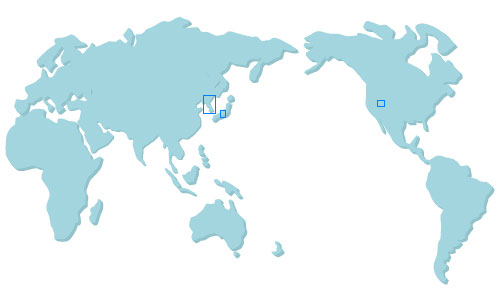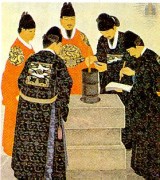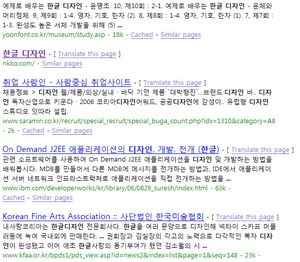XO Korea/Korean: Difference between revisions
< XO Korea
Jump to navigation
Jump to search
No edit summary |
m (catetgory) |
||
| (7 intermediate revisions by 3 users not shown) | |||
| Line 1: | Line 1: | ||
* '''Learned from [[user:Xavi]]'s page for Spanish.''' |
* '''Learned from [[user:Xavi]]'s page for Spanish.''' |
||
* <small> Redirected from <nowiki> [[Korean]] to [[XO Korea/Korean]] </nowiki>. For old version, see [[XO Korea/Korean/old version]]. </small> |
|||
{{Infobox language |
{{Infobox language |
||
| Line 5: | Line 6: | ||
| name_native = 한국어 |
| name_native = 한국어 |
||
| number_of_speakers = ~ 80,000,000 |
| number_of_speakers = ~ 80,000,000 |
||
| countries = [[OLPC Korea|Korea]], North Korea, Korean Chinese, |
| countries = South [[OLPC Korea|Korea]] (한국), North Korea (조선), Korean Chinese(조선족), Koreans in Japan (재일동포), Koreans in the USA (재미교포), Koreans in the old Soviet Unions (고려인). |
||
| image_map = [[Image:worldmap.jpg]] |
| image_map = [[Image:worldmap.jpg|Rectangles represent Korean communities]] |
||
| official_status = official |
| official_status = official |
||
| unicode_support = |
| unicode_support = |
||
| Line 16: | Line 17: | ||
| olpc_status_color = orange |
| olpc_status_color = orange |
||
}} |
}} |
||
[http://en.wikipedia.org/wiki/ |
[http://en.wikipedia.org/wiki/Hangul Hangul] (한글), the writing system used in Korean, is included in Unicode 1100~11FF as Hangul Jamo. It is the only [http://en.wikipedia.org/wiki/Writing_system writing system] used by a major language that was created specifically for that language (unlike the writing system used in English, for example, which comes from Latin alphabet, which was in turn adapted from other writing systems). It was created by King Sejong [[Image:sejong.jpg|right]] and scholars in the [http://en.wikipedia.org/wiki/Hall_of_Worthies Hall of Worthies] between AD 1443~1526. |
||
== l10n == |
== l10n == |
||
| Line 29: | Line 30: | ||
; Keyboard : [[OLPC Korean Keyboard]] will fully supports the language |
; Keyboard : [[OLPC Korean Keyboard]] will fully supports the language |
||
; Input methods : except for 'standard' keyboard and touchpad would suffice for general use, although special considerations would be needed for physical |
; Input methods : except for 'standard' keyboard and touchpad would suffice for general use, although special considerations would be needed for physical disabilities. |
||
; Speech synthesis : there is not so wide variances region to region compared to other languages such as Chinese. |
; Speech synthesis : there is not so wide variances region to region compared to other languages such as Chinese. |
||
; Dictionaries, Spelling Checkers, Thesaurus : are very much developed in [[Korean]] |
; Dictionaries, Spelling Checkers, Thesaurus : are very much developed in [[Korean]] |
||
:; [http://aspell.net/man-html/Supported.html aspell] : [[ |
:; [http://aspell.net/man-html/Supported.html aspell] : [[Korean]] is treated as a single language unit, without regional/national divisions. <tt>'''Code:'''ko '''Name:''' Korean '''Script:''' Hangul Jamo '''Available:''' '''Status:''' </tt> |
||
:; [http://dictionaries.mozdev.org/installation.html mozilla] : coming soon. |
:; [http://dictionaries.mozdev.org/installation.html mozilla] : coming soon. |
||
:; [http://www.abiword.org/languages.phtml abiword] : coming soon.. |
:; [http://www.abiword.org/languages.phtml abiword] : coming soon.. |
||
| Line 49: | Line 50: | ||
== Formats == |
== Formats == |
||
; Date : Traditionally, dates are in the <tt>YY/MM/DD</tt> |
; Date : Traditionally, dates are all numeric in the <tt>YY/MM/DD</tt> or <tt>YYYY/MM/DD</tt>. if necessary, the day of week is written at the last. In the formula official document of government, it separated by dot and white space(<tt>YYYY. MM. DD.</tt>) and has not the day of week. |
||
; Numbers : use the <tt>-9 |
; Numbers : use the <tt>-9,999.99</tt> format (coma for thousands and period for decimal, prefix sign). |
||
; Currency : KRW, won. -₩9,999.99 |
|||
== Population == |
== Population == |
||
<font size="-1"> |
|||
48,000,000 South Korea official (2006) |
48,000,000 South Korea official (2006) |
||
22,200,000 North Korea estimation (2002 |
22,200,000 North Korea estimation (2002) |
||
1,600,000 Koreans in Japan estimation (2002) |
1,600,000 Koreans in Japan estimation (2002) |
||
1,900,000 Korean Chinese official (2006) |
1,900,000 Korean Chinese official (2006) |
||
200,000 Korean in Old Soviet estimation (2006) |
200,000 Korean in Old Soviet estimation (2006) |
||
2,000,000 Korean in the USA estimation (2006) |
2,000,000 Korean in the USA estimation (2006) |
||
'''75,900,000 TOTAL''' |
|||
================================ |
|||
75,900,000 TOTAL |
|||
[[Category:XO Korea]] |
|||
[[Category:Languages (international)]] |
|||
Latest revision as of 08:43, 11 January 2008
- Learned from user:Xavi's page for Spanish.
- Redirected from [[Korean]] to [[XO Korea/Korean]] . For old version, see XO Korea/Korean/old version.
| Korean 한국어 | ||
|---|---|---|
| Speakers | ~ 80,000,000 | |

| ||
| Countries | South Korea (한국), North Korea (조선), Korean Chinese(조선족), Koreans in Japan (재일동포), Koreans in the USA (재미교포), Koreans in the old Soviet Unions (고려인). | |
| Status | official | |
| Unicode | ||
| Direction | ||
| Alphabet | [1] | |
| ISO 639-1: | ko | |
| ISO 639-2: | kor | |
| ISO/FDIS 639-3: | kor [2] | |
Hangul (한글), the writing system used in Korean, is included in Unicode 1100~11FF as Hangul Jamo. It is the only writing system used by a major language that was created specifically for that language (unlike the writing system used in English, for example, which comes from Latin alphabet, which was in turn adapted from other writing systems). It was created by King Sejong
and scholars in the Hall of Worthies between AD 1443~1526.
l10n
- Character sets
- Unicode supported.
- Script layout
- is left-to-right, top-to-bottom. Fully supported by Pango the layout engine chosen.
- Fonts
- see Hangul
File:Korean.png
Korean keyboard
- Keyboard
- OLPC Korean Keyboard will fully supports the language
- Input methods
- except for 'standard' keyboard and touchpad would suffice for general use, although special considerations would be needed for physical disabilities.
- Speech synthesis
- there is not so wide variances region to region compared to other languages such as Chinese.
- Dictionaries, Spelling Checkers, Thesaurus
- are very much developed in Korean
- aspell
- Korean is treated as a single language unit, without regional/national divisions. Code:ko Name: Korean Script: Hangul Jamo Available: Status:
- mozilla
- coming soon.
- abiword
- coming soon..
- OpenOffice
- coming soon...
- Character recognition
- This article is a stub. You can help the OLPC project by expanding it.
Alphabet
ㄱ, ㄴ, ㄷ, ㄹ, ㅁ, ㅂ, ㅅ, ㅇ, ㅈ, ㅊ, ㅋ, ㅌ, ㅍ, ㅎ ㅏ, ㅑ, ㅓ, ㅕ, ㅗ, ㅛ, ㅜ, ㅠ, ㅡ, ㅣ
Formats
- Date
- Traditionally, dates are all numeric in the YY/MM/DD or YYYY/MM/DD. if necessary, the day of week is written at the last. In the formula official document of government, it separated by dot and white space(YYYY. MM. DD.) and has not the day of week.
- Numbers
- use the -9,999.99 format (coma for thousands and period for decimal, prefix sign).
- Currency
- KRW, won. -₩9,999.99
Population
48,000,000 South Korea official (2006)
22,200,000 North Korea estimation (2002)
1,600,000 Koreans in Japan estimation (2002)
1,900,000 Korean Chinese official (2006)
200,000 Korean in Old Soviet estimation (2006)
2,000,000 Korean in the USA estimation (2006)
75,900,000 TOTAL

